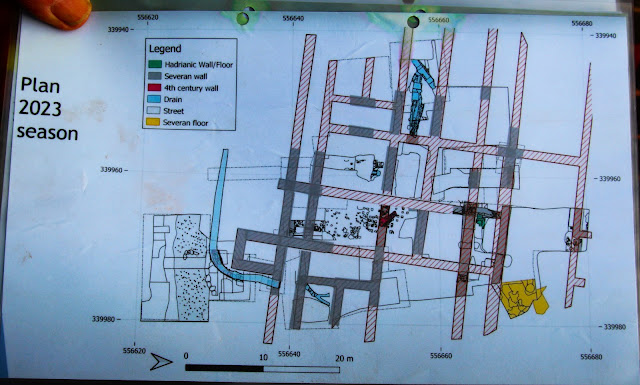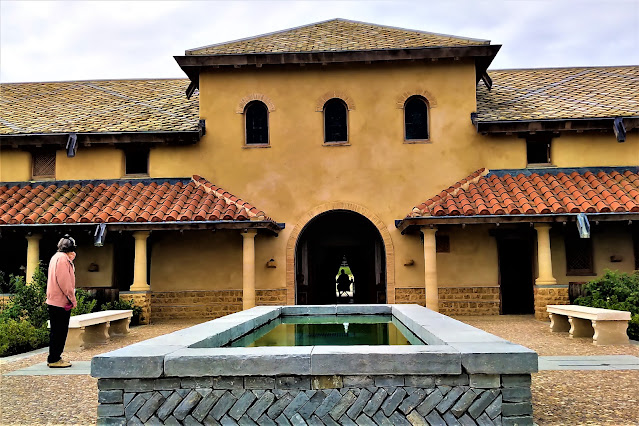Carlisle Roman Site
Introduction
Yesterday, I visited the emerging important Roman site at Carlisle in N.W. England, the penultimate day of the current excavation.
Information on the excavation at Carlisle.
I visited the site numerous times over the period 2023-2024 the records of which can be found in this composite post.
The excavation team have recently enjoyed a run of unusually favourable weather conditions for the time of year.
By way of a recap, this site is located a short distance south of nearby Hadrian's Wall. It was very high status and is closely associated today with the period of Emperor, Septimus Severus who may well have visited the combined recreational and residential complex during his stay in Britain.
Septimus Severus travelled to Britain in 208, where he strengthened Hadrian's Wall and reoccupied the Antonine Wall. He also invaded Caledonia (modern Scotland) with an army of 50,000 men in 209, but his ambitions were cut short when he fell fatally ill of an infectious disease in late 210. Britain was divided into two regions, north and south, after Severus's arrival. Severus's descendants remained in power until 235, with the exception of the rule of Marcus Opellius Macrinus (217–218).
The images below provide an update on the site.
In this and other images the stacks of tiles form part of the central heating system.The tiles supported the floor with the void below the floor used to circulate hot air from a nearby furnace, in effect under-floor central heating.This is known as a hypocaust heating system.
Site of furnace (ringed). Slaves would probably have been employed in the unpleasant work of maintaining the fire and temperature.
Another aspect of the excavation showing the hypocaust tiles and robbed out wall.
Video clip of excavation in process.
Here is an artist's speculative impression of the section of the site covered in this post. It
has to be said that no evidence has been found so far of the stone
window frames or roof tiles.The small structure at rear is made of wood.
Here is a site map illustrating the key walls and floors.
Here is one of the finds trays. The red/ochre pottery is high class Samian Ware made in Gaul (France) whereas the dark pottery is locally made.
More Information.
Please refer previous blog posts as follows:
- Jan 3rd 2024:https://www.nigelsphotoblog.co.uk/2024/01/roman-bathhouse-at-carlisle.html
- Nov 9th 2023:https://www.nigelsphotoblog.co.uk/2023/11/roman-bathhouse-at-carlisle.html
- Feb 2nd 2023: https://www.nigelsphotoblog.co.uk/2023/02/roman-finds-at-carlisle.html
- Nov 5th 2024:https://www.nigelsphotoblog.co.uk/2024/11/impressive-find-from-carlisle-roman.html
The
Tullie Museum and Art Gallery has a fine exhibition covering the Roman
period on the basement floor. This facility is located opposite to
entrance of Carlisle Castle.









Comments
Post a Comment